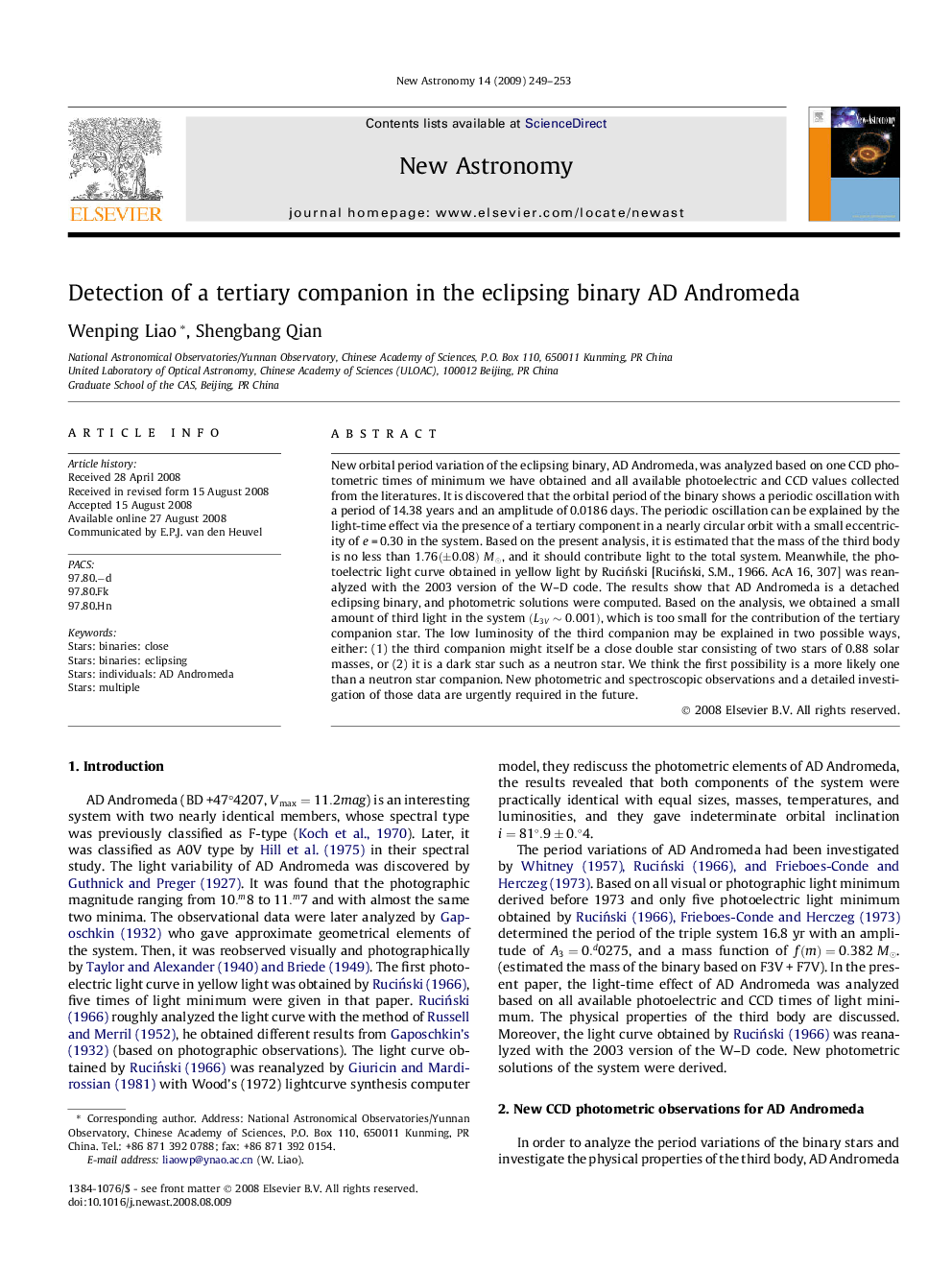| Article ID | Journal | Published Year | Pages | File Type |
|---|---|---|---|---|
| 1779638 | New Astronomy | 2009 | 5 Pages |
New orbital period variation of the eclipsing binary, AD Andromeda, was analyzed based on one CCD photometric times of minimum we have obtained and all available photoelectric and CCD values collected from the literatures. It is discovered that the orbital period of the binary shows a periodic oscillation with a period of 14.38 years and an amplitude of 0.0186 days. The periodic oscillation can be explained by the light-time effect via the presence of a tertiary component in a nearly circular orbit with a small eccentricity of e = 0.30 in the system. Based on the present analysis, it is estimated that the mass of the third body is no less than 1.76(±0.08)M⊙, and it should contribute light to the total system. Meanwhile, the photoelectric light curve obtained in yellow light by Ruciński [Ruciński, S.M., 1966. AcA 16, 307] was reanalyzed with the 2003 version of the W–D code. The results show that AD Andromeda is a detached eclipsing binary, and photometric solutions were computed. Based on the analysis, we obtained a small amount of third light in the system (L3V∼0.001)(L3V∼0.001), which is too small for the contribution of the tertiary companion star. The low luminosity of the third companion may be explained in two possible ways, either: (1) the third companion might itself be a close double star consisting of two stars of 0.88 solar masses, or (2) it is a dark star such as a neutron star. We think the first possibility is a more likely one than a neutron star companion. New photometric and spectroscopic observations and a detailed investigation of those data are urgently required in the future.
